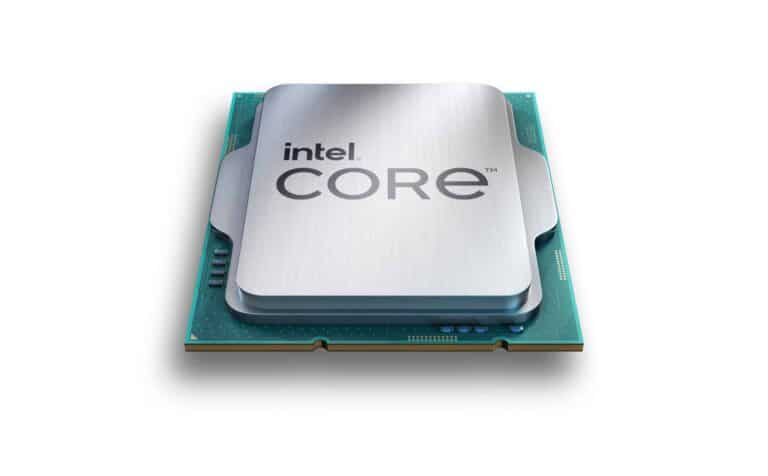Intel is launching the 13th Gen Core ‘Raptor Lake’ series. The processors primarily focus on gaming, but content creation and productivity should get a boost as well. Intel wants to achieve this with an improved core count (up to 24 cores) and a hybrid architecture. The company claims Raptor Lake reaches a clock speed of 6 GHz and an overclocking record of 8 GHz.
The new chips are successors to the 12th Gen Alder Lake. For now, we have information on three SoCs within the Raptor Lake series: the Intel Core i9K and i9KF, the Intel Core i7K and i7KF and the Intel Core i5K and i5KF. More models are expected to follow, which have likely set the overclocking record of 8GHz.
Cores and hybrid architecture
The current top model has 24 cores, 8 of which are Performance cores and 16 of which are Efficient cores. Intel uses the hybrid architecture to make the most of the chip’s available surface area. By integrating two core microarchitectures into a single die, Intel can prioritize and distribute workloads for performance optimization.
The hybrid architecture should ensure that workloads always end up on the appropriate cores. For example, in the case of the Raptor Lake, a demanding video game can run on P cores while a background application can run on E cores. Intel uses the Thread Director to provide support for distributing these workloads. This controller helps the OS scheduler distribute workloads among the optimal cores.
The technique and cores allow Intel to offer performance. The table below shows what the announced Raptor Lake processors are capable of.
| Intel Core i9K and i9KF | Intel Core i7K and i7KF | Intel Core i5K and i5KF | |
| Max Turbo Frequency (GHz). | 5,8 | 5,4 | 5,1 |
| Intel Turbo Boost Max Technology 3.0 Frequency (GHz) | 5,7 | 5,4 | n/a |
| P-core Max Turbo Frequency (GHz) | 5,4 | 5,3 | 5,1 |
| E-core Mac Turbo Frequency (GHz) | 4,3 | 4,2 | 3,9 |
| P-core Base Frequency (GHz) | 3,0 | 3,4 | 3,5 |
| E-core Base Frequency (GHz) | 2,2 | 2,5 | 2,6 |
| Hyper-Threading Technology | yes | yes | yes |
| Total Processor Threads | 32 | 24 | 20 |
Dynamic platform
The system performance of the 13th Gen Intel Core desktop processors should be further boosted with new platform technologies. For example, Intel supports up to 16 PCIe 5.0 lanes, which should provide accelerated processing power. This allows up to 32 GT/s for fast access to graphics, storage and peripherals. For additional storage and peripheral needs, Intel supports 4 PCIe 4.0 lanes.
Furthermore, users can count on DDR5 support, which should lead to up to 5600 MT/s memory speed, high bandwidth and improved productivity. At the same time, there’s DDR4 support of up to 3200 MT/s.
Supporting different experiences
As mentioned above, Intel is particularly targeting gamers and content creators with its 13th Gen chips. They should be able to achieve the “ultimate immersive experience” with the processor. To this end, Intel has implemented its UHD Graphics driven by Xe Architecture technology, which delivers faster image processing. In practice, there’s support for up to 8K60 HDR video and four 4K60 displays simultaneously.
Another interesting feature for immersive experiences is the noise cancellation and voice output provided by Intel Gaussian & Neural Accelerator 3.0. The technology processes speech and audio with neural noise suppression while simultaneously freeing up CPU resources for general system performance.
Lastly, Intel aims to provide fast internet using its Killer Wi-Fi 6/6E technology, which manages and routes internet traffic. Intel’s products support optional 160 MHz channels, which should achieve the fastest possible speed of 2402Mbps for typical 2×2 802.12ax PC Wi-Fi products.
Intel will release the first models on October 20. At this time, US prices are the only prices disclosed. The cheapest model, the Intel Core i5KF, costs $294 (roughly €308 converted). The top model, the Intel Core i9K, costs $589 (roughly €617 converted).
Tip: Intel will rebrand and upgrade its Celeron and Pentium processors
